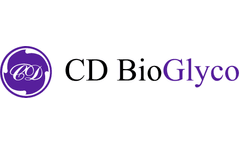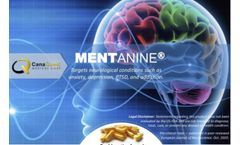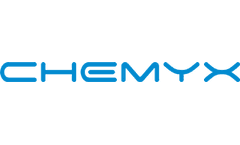Refine by
Brain Barrier Articles & Analysis
20 articles found
This category encompasses antidepressants, antipsychotics, anxiolytics, anticonvulsants, and cognitive enhancers, each designed to cross the blood-brain barrier and interact with specific neural targets. The development of CNS APIs presents unique challenges due to the complexity of the brain, limited understanding of many neurological disorders, ...
Astrocytes, the star-shaped glial cells in the brain, play crucial roles in maintaining homeostasis, supporting neuronal function, and responding to injury. ...
Controlled release formulations are especially beneficial for chronic conditions requiring long-term medication. Crossing Physiological Barriers A formidable challenge in drug development is designing formulations that can cross physiological barriers, such as the blood-brain barrier. Nanoparticles exhibit unique properties ...
The NP recognition by the immune system and NPs synthesis by the reticuloendothelial system are the primary barriers to nano drug delivery to organs, tissues and lesions. Also, NPs have a negative side effect, like microcirculatory embolism. ...
Alfa Cytology has introduced its advanced drug development services for brain tumors. Alfa Cytology, celebrated for its cutting-edge biotech solutions and extensive tumor research expertise, has recently introduced brain tumor drug development services, designed to empower researchers in understanding the intricacies and unique challenges associated with ...
Doxil®, a PEGylated liposomal formulation of doxorubicin, is a well-known example used in cancer treatment. Improving Blood-Brain Barrier Penetration The blood-brain barrier (BBB) is a significant obstacle in the delivery of therapeutic agents to the central nervous system (CNS). PEG derivatives have shown the potential to ...
Small molecule drugs are crucial for targeting the molecular pathways and signaling mechanisms involved in the growth and development of brain tumors. These drugs can cross the blood-brain barrier and enter directly into the tumor cells, thus exerting a targeted effect. ...
Promote the binding of nanoparticles to lipoprotein receptor-related protein (LRP), thereby effectively promoting the nanoparticles to cross the blood-brain barrier (BBB), which has potential application value in the treatment of brain diseases. ...
The unique molecular structure enables it to have good tissue penetration, shorter half-life and higher renal clearance rate, and can penetrate the blood-brain barrier. Structurally, nanobodies are composed of complementarity-determining regions and framework regions. ...
ALK-positive non-small cell lung cancer (ALK+ NSCLC) is a relatively rare and dangerous subtype, with patients suffering from a high incidence rate of brain metastases. Statistics show that about 55% of ALK-positive advanced NSCLC patients will develop brain metastases during the treatment process, which is a serious challenge facing oncologists. ...
For tryptophan to cross the blood-brain barrier (BBB) and produce serotonin (the hormone that regulates sleep), it first has to compete with the other amino acids in turkey. The BBB helps keep our brains safe by tightly regulating what can cross into the brain—acting like the security checkpoint at an airport. ...
The dorsal vagal complex is one of the few crossroads in the central nervous system, where there is no blood-brain barrier and circulating factors in the blood can transmit information directly to the brain. ...
About: CanaQuest Medical is an award-winning, Clinical Stage/Life-Sciences company focused on the drug discovery and development of next-generation targeted therapeutics within the endocannabinoid system and specific brain receptors. The Company is focused on treating neurological conditions, such as epilepsy, anxiety, depression, and Post Traumatic Stress Disorder “PTSD,” including ...
Other CPPs present additional advantages such as tumor-homing, penetration through the blood-brain barrier, and antimicrobial activity. l FeaturesThe most remarkable feature of cell-penetrating peptides is that it’s able to penetrate the cell membrane at low micromolar concentrations in vivo and in vitro, without using any chiral receptors and without causing ...
Among them, the most difficult or most capable of establishing technical barriers is the drug delivery vector. The RNA drug delivery system An excellent delivery system must meet the following basic requirements: 1. ...
CURRENT STANDARD OF CARE FOR BRAIN TUMORS The current initial standard of care for aggressive brain tumors—whether they are primary brain tumors (ie, tumors that originate in the brain), or metastatic tumors from cancers that started outside of the brain—is resection. After surgery, a follow-up ...
Cardiovascular: Hydrogen molecule is the smallest molecule in nature. It can easily cross the blood-brain barrier and directly act on the nucleus and mitochondria to activate blood vessels, thus significantly inhibiting cardiovascular and cerebrovascular diseases. ...
In the spinal cord, after white matter injury (WMI), NFIA-deficient astrocytes exhibit defects in blood-brain barrier remodeling, which are correlated with the suppression of timely remyelination. ...
The ability of a bioactive Matrix Metalloproteinase (MMP) inhibitor, and more importantly its metabolic products, to affect cells in the brain by crossing the physiological blood-brain barrier was tested by continuous infusion of this drug into the circulatory system of mice using a programmable syringe pump.2 Accurate infusion of a GABA agonist, ...
The PFAAs studied were perfluoroalkyl carboxylates (PFCAs, C6–C15 chain lengths) and sulfonates (C4, C6, C8, and C10 chain lengths) as well as selected precursors including perfluoro‐octane sulfonamide. On a wet‐weight basis, blood–brain barrier transport of PFAAs occurred for all brain regions, although inner regions of the ...














